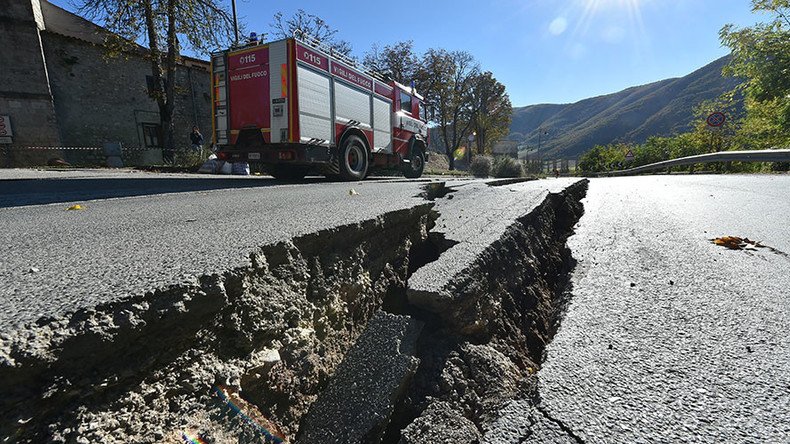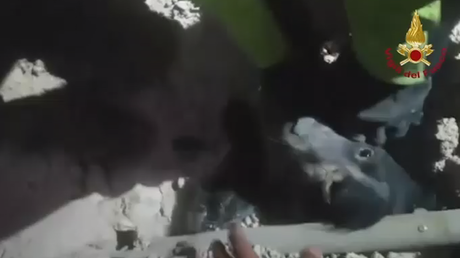Italian earthquakes move ground by 70cm - scientists

A series of earthquakes that struck central Italy over the last week have moved the ground in affected areas either up or down by up to 70 centimeters (27.5 inches), experts say, citing satellite imagery.
The level of impact of the shock was determined by scientists from the Institute of Geophysics and Volcanology (INGV).
“The image processing is in progress,” the INGV’s Simone Atzori explained, “but we can already say that in some areas such as Castelluccio, soil has been lowered by up to 70 centimeters.”
“The western slope of Monte Vettore has slipped down by several tens of centimeters,” he added.
The 6.5 magnitude earthquake on October 30 may have been down to a domino effect: the earlier quake on 24 August which killed 298 (also in central Italy), activated the fault line that broke on October 26, paving the way for the latest shock.
“We are already sure, in fact, that the breaking of October 30 partly reflects that of August 24 – which occurred between Amatrice, Accumoli and Norcia – Norcia-Visso and that of the previous days,” INGV seismologist Alessandro Amato told il Fatto Quotidiano.
“The last earthquake originated in the middle of the other two and has activated a fault of 20-25 km, nearly 30, ranging from a little further north up to the south of the epicenter, to Amatrice. At the moment the most likely explanation is that the part of the fault that moved on August 24 it had slipped completely, resuming its movement.”
“The processing of seismic data has already enabled us to understand that the last event has the same direction as the other faults. And if it is not the same, it is certainly parallel."
Several smaller, weaker tremors continued to rock the region, with a 4.7 magnitude shock in Macerata on Tuesday, north east of the devastated town of Norcia which was at the heart of Sunday’s earthquake.
Prime Minister Matteo Renzi has promised to rebuild the area, restoring not only houses but cultural icons that had been devastated in the quake, saying “Norcia without a church is without its identity.”
The Sunday earthquake was the most violent to hit Italy since the 1980 Irpinia quake which left around 2,700 dead across the south. Despite widespread destruction, including of the famous Norcia basilica, no-one was killed although there were twenty injuries and over thirty thousand people were displaced. Italy lies on two geological fault lines, making it one of the most seismically active regions in Europe.












